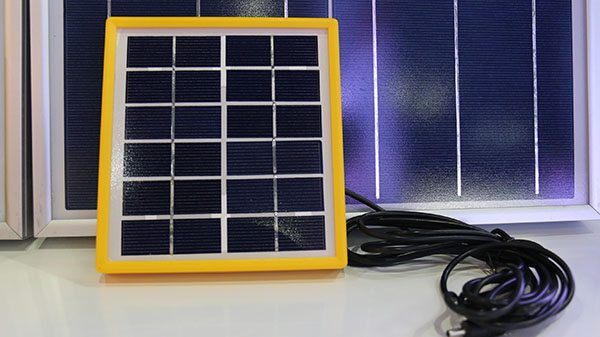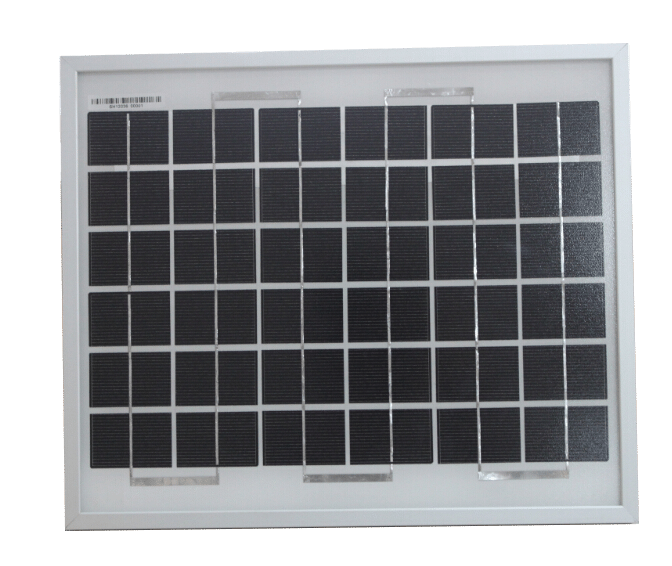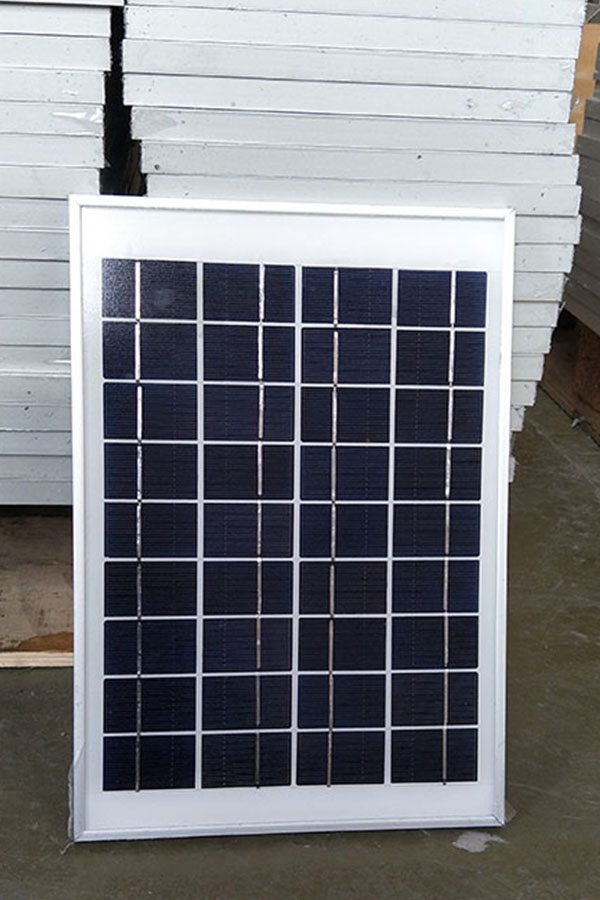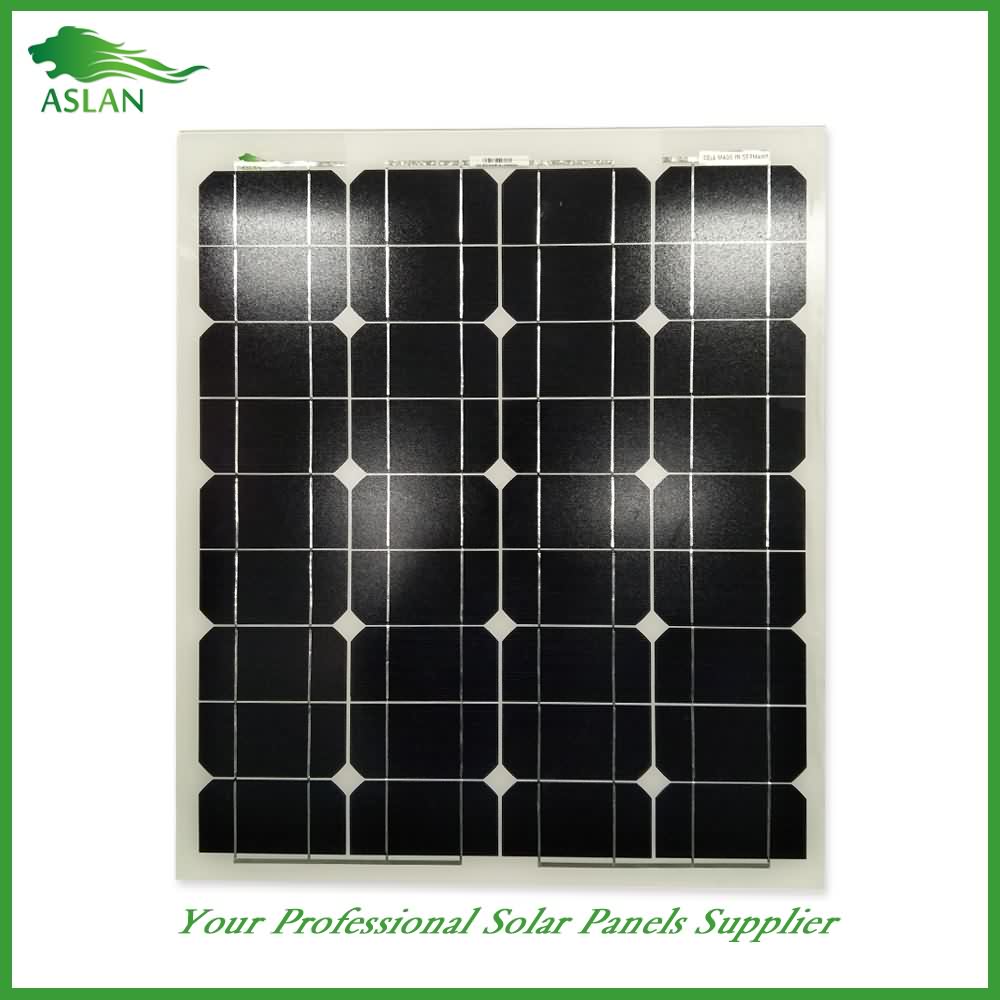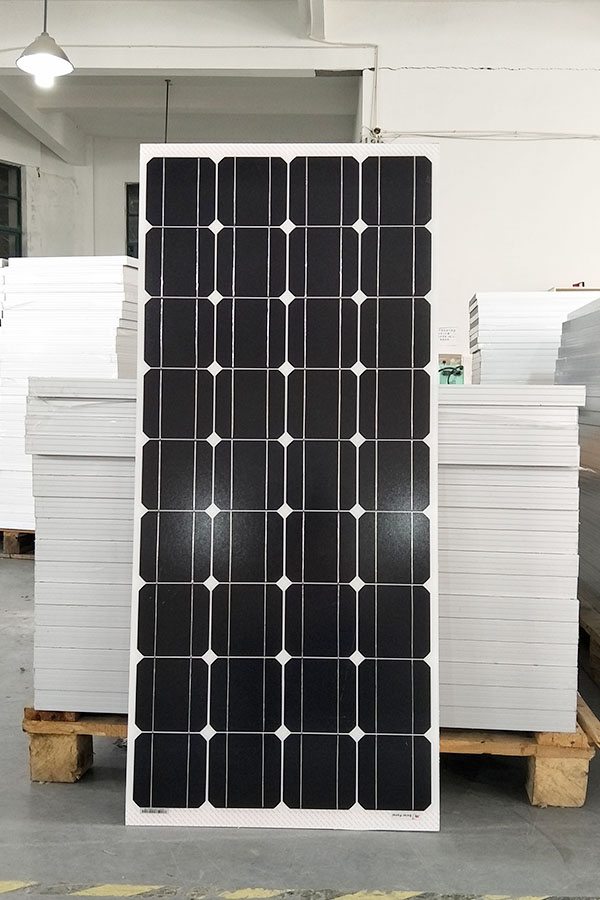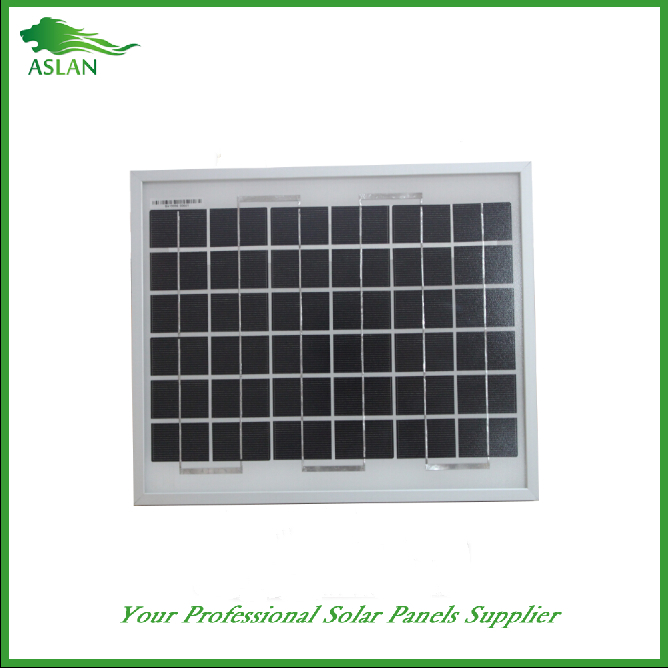Online Manufacturer for Poly-crystalline Solar Panel 2W Supply to USA
Short Description:
We not only will try our best to offer excellent services to every customer, but also are ready to receive any suggestion offered by our customers for Online Manufacturer for Poly-crystalline Solar Panel 2W Supply to USA, Welcome to build the well and long standing business relationships with our company to create a glorious future together .customers' satisfaction is our eternal pursuit
Poly-crystalline Solar Panel 2W
Technical parameter
Maximum Power(W) 2W
Optimum Power Voltage(Vmp) 6V
Optimum Operating Current(Imp) 0.34A
Open Circuit Voltage(Voc) 7.2V
Short Circuit Current(Isc) 0.37A
Mechanical Characteristics
Cell Type Polycrystalline
No of Cell 12 (2x6pcs)
Dimensions 145x145x18mm
Weight 0.4KGS
Front Glass 3.2mm, High Transmission, Low iron, tempered Glass
Temperature and Coefficients
Operating Temperature(°C): -40°C ~ + 85°C
Maximum System Voltage: 600V(UL)/1000V(IEC) DC
Maximum Rated Current Series: 10A
Temperature Coefficients of Pmax: -0.435%
Temperature Coefficients of Voc: -0.35%
Temperature Coefficients of Isc: 0.043%
Nominal Operating Cell Temperature (NOCT): 47+/-2°C
Materials of solar panel
1).Solar Cell——Polycrystalline solar cell 156*156mm
2).Front Glass——-3.2mm, high transmission, low iron, tempered glass
3).EVA——-excellent anti-aging EVA
4).TPT——-TPT hot seal made of flame resistance
5).Frame——anodized aluminum profile
6).Junction Box——-IP65 rated, high quality, with diode protection
Superiority: high quality anodized aluminum frame, high efficiency long life, easy installation, strong wind resistance, strong hail resistance.
Features
1. High cell efficiency with quality silicon materials for long term output stability
2. Strictly quality control ensure the stability and reliability, totally 23 QC procedures
3. High transmittance low iron tempered glass with enhanced stiffness and impact resistance
4. Both Poly-crystalline and Mono-crystalline
5. Excellent performance in harsh weather
6. Outstanding electrical performance under high temperature and low irradiance
Quality assurance testing
Thermal cycling test
Thermal shock test
Thermal/Freezing and high humidity cycling test
Electrical isolation test
Hail impact test
Mechanical, wind and twist loading test
Salt mist test
Light and water-exposure test
Moist carbon dioxide/sulphur dioxide
http://alipromo.com/redirect/product/30e12e5c9935a27494e5ccc04ad4240c/32746689273/en – Mini 6v 12v Solar Panel China Power System Diy Battery Cell Charger Module Panneau Solaire Energy Board
Brand Name: ANBES
Size: 80 55mm 115x85mm
Model Number: Solar Power Panel
Number of Cells: Solar Power Panel
Material: Monocrystalline Silicon
Nominal Capacity: 6V 80 55mm 12V 115x85mm
Item Name: Solar Power Panel China
Features: Solar Power Panel Poly Module DIY Small Cell Charger Solar Panel
Usage: For Light Battery Phone Toy Portable
Model Number: Solar Power Panel
In this short explainer video, Universe Today publisher Fraser Cain explains just how many planets there are in the Solar System. How did we go from 9 to 8, and what does this mean for Pluto?
http://www.universetoday.com/15568/how-many-planets-are-in-the-solar-system/
—————
How Many Planets are in the Solar System?
I’m just going to warn you, this is a controversial topic.
Some people get pretty grumpy when you ask: how many planets are in the Solar System? Is it eight, ten, or more? I promise you this, though, we’re never going back to nine planets… ever.
When many of us grew up, there were nine planets in the Solar System. It was like a fixed point in our brains.
As kids, memorizing this list was an early right of passage of nerd pride: Mercury, Venus, Earth, Mars, Jupiter, Saturn, Uranus, Neptune and Pluto.
But then in two-thousand-five, Mike Brown discovered Eris, an icy object thought to be about the same size as Pluto, out beyond its orbit.
That would bring the total number of planets to ten. Right?
There’s no turning back, textbooks would need to be changed.
In order to settle the dispute, the International Astronomical Union met in two-thousand-six, and argued for, and against Pluto’s planethood.
Some astronomers advocated widening the number of planets to twelve, including Pluto, its moon Charon, the Asteroid Ceres, and the newly discovered Eris.
In the end, they changed the definition of what makes a planet, and sadly, Pluto doesn’t make the cut:
Here are the new requirements of planethood status:
1. A planet has to orbit the Sun. Okay fine, Pluto does that.
2. A planet needs enough gravity to pull itself into a sphere. Okay, spherical. Pluto’s fine there too.
3. A planet needs to have cleared out its orbit of other objects. Uh oh, Pluto hasn’t done that.
For example, planet Earth accounts for a million times the rest of the material in its orbit, while Pluto is just a fraction of the icy objects in its realm.
The final decision was to demote Pluto from planet to dwarf planet.
But don’t despair, Pluto is in good company.
There’s Ceres, the first asteroid ever discovered, and the smallest of the dwarf planets. The surface of Ceres is made of ice and rock, and it might even have a liquid ocean under its surface. NASA’s Dawn mission is flying there right now to give us close up pictures for the first time.
Haumea, named after the Hawaiian goddess of fertility, is about a third the mass of Pluto, and has just enough gravity to pull itself into an ellipsoid, or egg shape. Even though it’s smaller, it’s got moons of its own.
Makemake, a much larger Kuiper belt object, has a diameter about two-thirds the size of Pluto. It was discovered in two-thousand-five by Mike Brown and his team. So far, Makemake doesn’t seem to have any moons.
Eris is the most massive known dwarf planet, and the one that helped turn our definition of a planet upside-down. It’s twenty-seven-percent more massive than Pluto and the ninth most massive body that orbits the Sun. It even has a moon: Dysnomia.
And of course, Pluto. The founding member of the dwarf family.
Want an easy way to remember the eight planets, in order? Just remember this mnemonic: my very excellent mother just served us noodles.
For all you currently writing angry tweets to Mike Brown, hold on a sec. Changing Pluto’s categorization is an important step that really needed to happen.
The more we discover about our Universe, the more we realize just how strange and wonderful it is. When Pluto was discovered eighty years ago, we never could have expected the variety of objects in the Solar System. Categorizing Pluto as a dwarf planet helps us better describe our celestial home.
So, our Solar System now has eight planets, and five dwarf planets.
Thanks for watching!
